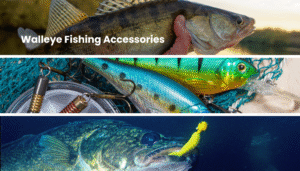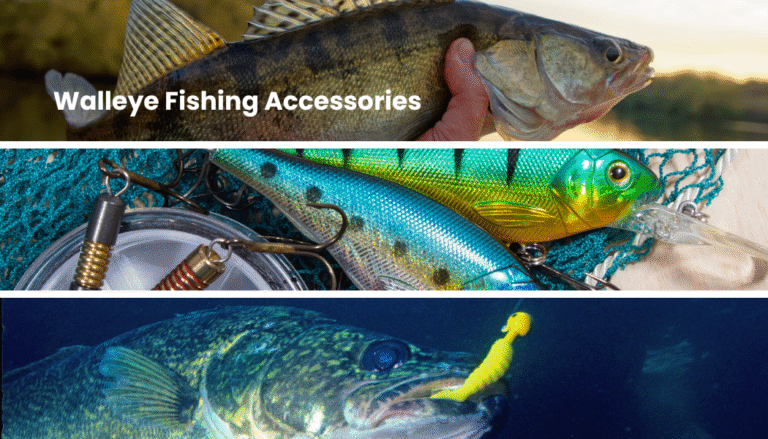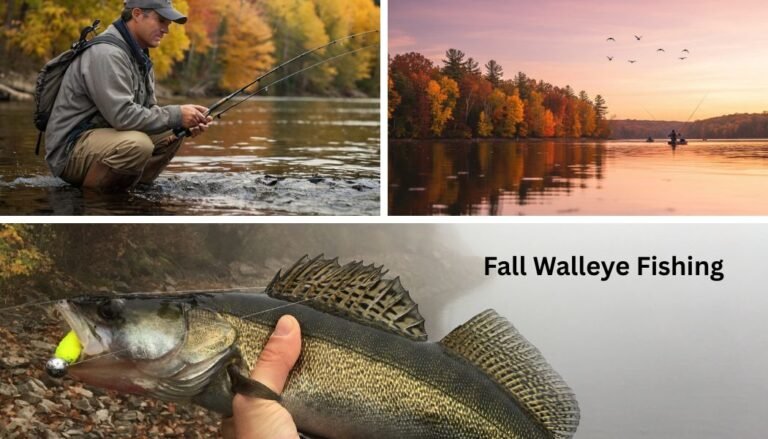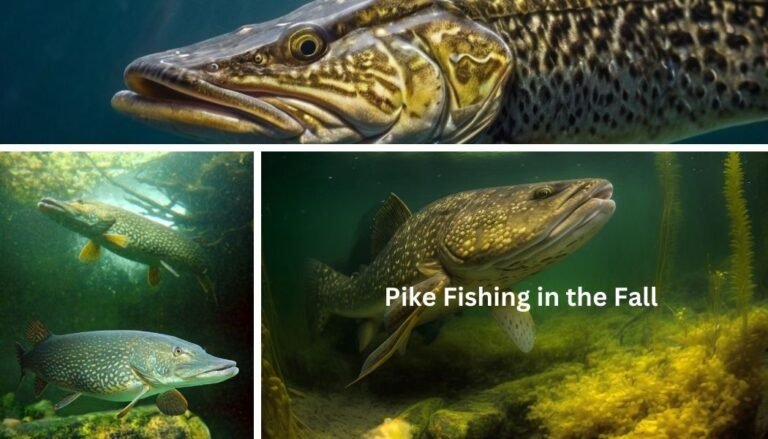The Right Walleye Fishing Accessories Can Make or Break Your Trip
There’s something truly thrilling about the moment a walleye bites. Whether you’re casting from shore, jigging in deep waters, or trolling along a drop-off, the right walleye fishing accessories can make all the difference between going home empty-handed and landing a trophy fish. I remember my first big walleye; I didn’t just have luck on my side. I had the right tools. With the proper gear, you’ll improve your chances, fish more efficiently, and have a much more enjoyable experience on the water.
According to surveys, anglers who use species-specific equipment often double their catch rates compared to those who use general fishing gear. That’s why in this guide, we’ll look deep into the must-have accessories that every walleye angler should consider. From lures that match the season to electronics that pinpoint the perfect spot, we’ll cover it all so you’re ready for your next fishing trip.
Essential Walleye Fishing Rods and Reels
You know, when I first started chasing walleye (Sander vitreus), I thought any old rod and reel would do. I grabbed what I had, a medium-heavy bass rod, and hit the water like I was invincible. I quickly learned otherwise. Walleye have this tricky, almost sneaky bite that’s so subtle it feels like your jig just brushed against a weed. If your setup isn’t tuned for sensitivity, you’ll miss half your strikes before you even realize what happened. Over the years (and after more missed fish than I care to admit), I’ve figured out what actually works best when it comes to rods and reels for walleye fishing.
Best rod types for jigging, trolling, and casting
Jigging for walleye is my bread and butter, and for that, I swear by a medium-light, fast-action spinning rod. You need something sensitive enough to feel that soft “tap” but strong enough to drive the hook home. I use a graphite rod, something around 6’6″ to 7′, because graphite transmits vibration better than fiberglass. When I switched from a cheap combo setup to a St. Croix Eyecon, I instantly felt the difference. Every pebble, every bump, suddenly, I was in tune with the bottom.
Now, trolling is a whole different beast. I use a medium or even medium-heavy rod with a bit more backbone, usually fiberglass or a composite, to absorb the shock from crankbaits and planer boards. A 7’6″ to 8’6″ rod gives you that nice parabolic bend, which keeps fish pinned even when they shake hard near the boat.
For casting crankbaits or swimbaits, I prefer a medium-power, moderate-fast rod. It loads better for longer casts, and that softer tip helps prevent tearing hooks out of a walleye’s mouth. Learned that lesson the hard way one windy day on Lake Erie, lost my biggest fish of the season because I was using a broomstick of a rod.
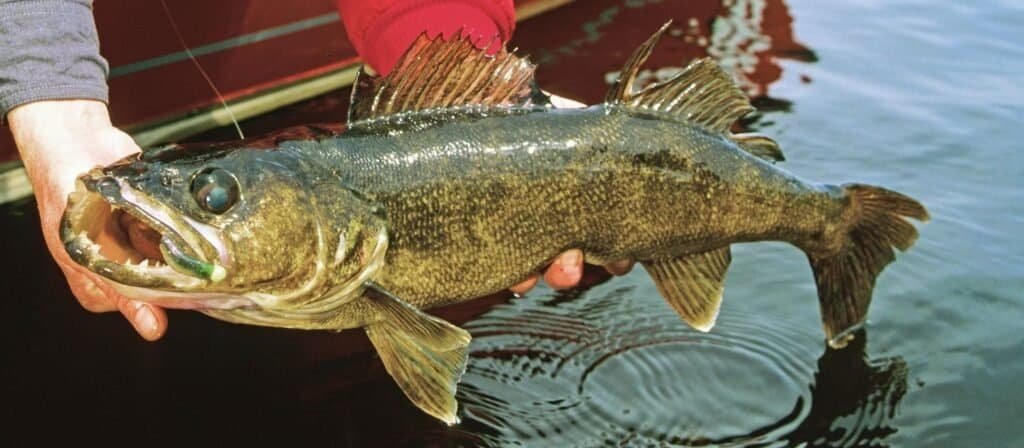
Recommended rod length and action for walleye fishing
Length really depends on how you fish. If you’re vertical jigging in a boat, a 6′ to 6’6″ rod gives you great control. For casting from shore, go with something closer to 7′ or 7’6″ to get extra distance. Fast or extra-fast action rods are best for feeling bites quickly, especially when using lighter jigs or live bait rigs.
Action makes a bigger difference than most beginners realize. A slower action can help when trolling or crankbait fishing, but for jigging, faster is better. You want that rod to snap back instantly when you lift your jig, not wobble like a wet noodle.
Choosing a reel with the right gear ratio
Picking the right reel gear ratio sounds technical, but it’s really about how fast you want to retrieve line. For jigging, I like something around 5.2:1; it gives me enough control to move my bait slowly while still reeling in slack quickly. If I’m casting crankbaits or spinners, I’ll bump up to a 6.2:1 ratio for faster retrieves.
One mistake I used to make was using a high-speed reel for everything. It sounds nice in theory, get your bait back faster, right? But in cold water when walleye are sluggish, that speed actually ruins your presentation. Slowing down both with your reel and your rhythm is usually what triggers bites.
Spinning vs. baitcasting reels for different situations
Okay, let’s settle this debate, at least from my perspective. I use spinning reels for 90% of my walleye fishing. They’re versatile, handle light line well, and let you cast small jigs or live bait rigs with precision. A good 2500 or 3000-size reel balances nicely with most walleye rods.
Baitcasters, on the other hand, shine when trolling or casting heavier crankbaits. They have more torque and can handle thicker lines, which helps when running deep-diving baits. I remember the first time I tried trolling with a spinning setup, line twist was out of control, and I spent more time untangling than fishing. That’s when I finally understood why pros swear by baitcasters for certain tactics.
In short: spinning reels for finesse and control, baitcasters for power and precision. Get both if you can; it’s not overkill, it’s just being ready for whatever mood the walleye are in that day.
Must-Have Walleye Lures and Baits
If there’s one lesson I’ve learned the hard way, it’s that walleye aren’t just “picky eaters”, they’re full-blown food critics. What works like magic one day will get you nothing but side-eye from the fish the next. I used to carry a tackle box full of random stuff, thinking variety was the key. Truth is, it’s not about how much gear you have, but how well you understand what triggers those stubborn fish to bite. Let’s talk about the lures and baits that have consistently earned a permanent spot in my box.
Top crankbaits, jerkbaits, and jig types
Crankbaits are my go-to when I’m trying to cover water fast. The Rapala Shad Rap and Berkley Flicker Shad have probably caught me more walleye than any other lure combined. I like the ones that dive 8 to 12 feet for mid-depth structure, perfect for when fish are suspended over drop-offs. If the water’s murky, I’ll switch to something with a little rattle or a brighter color like chartreuse or firetiger. Don’t be afraid to experiment; some of my best days came from running “ugly” colors everyone else ignored.
Jerkbaits, though, they’re my secret weapon in colder water. When spring ice-out hits or the fall temps start dropping, I slow things down and throw a Husky Jerk or a Smithwick Rogue. I’ll let it sit there for a few seconds after each twitch. That pause, man, that’s when the walleye smash it. The first time I learned that trick, I nearly lost my rod to a fish that hit right after I took a sip of coffee.
And of course, jigs. You can’t talk walleye without talking about jigs. I like using 1/8 to 3/8 oz round head jigs tipped with plastics or live bait. A VMC Moon Eye or Northland Fire-Ball Jig is a classic for a reason. I paint some of my own with glow powder for night fishing, and those have saved my bacon more times than I can count.
Soft plastics that mimic walleye prey
Soft plastics are the unsung heroes of my tackle box. Paddle tails, flukes, and grubs can all work wonders when fish are finicky. My favorite is the Berkley PowerBait Ripple Shad; it’s got that perfect tail thump that walleye can’t resist. On calm days, I’ll use a finesse-style plastic like a straight-tail minnow on a lighter jig head. It gives off a more natural swimming motion.
I’ve noticed walleye respond really well to color changes, too. If the bite dies off, I’ll switch from white or pearl to something with a hint of purple or green pumpkin. It’s wild how a small tweak like that can turn the bite back on. Matching the hatch matters; if they’re feeding on shad, use silvers and grays; if it’s perch, try chartreuse and orange.

Live bait options: minnows, leeches, and nightcrawlers
Now, if all else fails, live bait will almost always get the job done. I’ll admit, I used to think live bait was “cheating,” but after one too many skunks on artificial lures, I wised up. Minnows are my top pick in cold water, especially fatheads or shiners on a jig or slip bobber. They give off a natural flash and that subtle swimming motion that just drives walleye crazy. Check your fishing regulations; some regions don’t allow live baitfish or dead fish, period.
In summer, when the water warms up, leeches become the MVP. They stay lively on the hook and wiggle like mad. I remember one July evening, drifting a slip rig with a jumbo leech, I couldn’t keep the rod in the holder. Every five minutes, fish on.
Nightcrawlers shine during late spring and summer trolling. Thread one onto a spinner rig, and you’ve got a classic crawler harness setup. Slow troll around 1 mph, and you’ll get that irresistible roll that walleye love. Bonus tip: keep your crawlers cool and lively; nothing turns them off faster than a limp worm.
Seasonal lure selection for spring, summer, fall, and winter
Spring is all about slow and subtle. Jigs with minnows or suspending jerkbaits do wonders when walleye are hanging around shallow, warming waters. Once summer rolls in, I switch gears, crankbaits, crawler harnesses, and bottom bouncers dominate. Walleye tend to move deeper then, so I focus on structure and thermoclines.
Fall is my favorite season. The fish feed aggressively before winter, so I throw larger crankbaits and swimbaits. I’ll even bump up my jig size a bit for extra flash. Cold fronts can make things tricky, but if you find a school, it’s game on.
Winter is a whole other world. Through the ice, I stick with small jigging spoons like a Swedish Pimple or a Buck-Shot Rattle Spoon, often tipped with a minnow head. The bites are lighter, but man, nothing beats pulling a golden-eyed walleye through a fresh ice hole at sunrise.
Line, Leaders, and Terminal Tackle
Funny thing, when I first got serious about walleye fishing, I spent a small fortune on lures and rods, but barely gave my fishing line a second thought. I figured, “line is line,” right? Wrong. After snapping off two trophy-size walleye in one weekend (one of them right at the net, I still wince thinking about it), I learned that line choice can make or break your day on the water. Now, I’m almost obsessive about matching my line and terminal tackle to my technique. It’s not glamorous, but it’s the backbone of consistent success.
Monofilament vs. Fluorocarbon vs. Braided line for walleye
Let’s start with the great debate: mono, fluoro, or braid? I’ve used all three, and each one has its moment. Monofilament is like the old reliable truck you just can’t get rid of. It’s cheap, stretches a bit (which helps absorb shock), and is super forgiving when a walleye makes that unexpected head shake. I use mono mostly when trolling crankbaits or running crawler harnesses because that stretch keeps hooks from tearing out of their mouths.
Fluorocarbon, though, that’s my secret weapon for clear water. It’s nearly invisible underwater, which can make a huge difference on calm, sunny days when the fish are spooky. It also sinks faster than mono, so it’s great for jigging or rigging where you want your bait down quick. I usually go with 8 to 10 lb test for most applications.
Braided line is the powerhouse of the trio. I use it whenever I need sensitivity or strength, like when vertical jigging deep structure or pulling fish out of heavy cover. It has zero stretch, so you can feel every little tick, even in 30 feet of water. The downside? It’s visible and can spook fish, so I always pair it with a fluorocarbon leader.
Proper line weight for different techniques
Getting line weight right is one of those things that seems minor until it’s not. For jigging, I stick with 6 to 8 lb fluoro or braid with a light leader. It gives me enough strength to handle a big fish but still keeps the presentation natural. For trolling, I move up to 10 or 12 lb mono; that extra thickness helps handle crankbaits and planer boards.
When I’m casting swimbaits or jerkbaits, 8 to 10 lb fluoro is the sweet spot. It’s strong enough for solid hooksets but still light enough for long casts. I once tried using 20 lb braid for casting, thinking more strength meant fewer breakoffs, ended up scaring every walleye within a mile. Lesson learned: lighter is often better.
Using leaders to prevent bite-offs
Leaders are one of those things people either love or ignore. I used to be in the “who needs them” camp until a northern pike bit off my $12 crankbait like it was nothing. Now, I never go out without a few fluorocarbon or wire leaders in my bag. For walleye, a 12 to 18 inch fluorocarbon leader (10 to 12 lb test) is perfect. It’s stealthy, abrasion-resistant, and gives just enough protection against sharp teeth or rough rocks.
In areas where pike or muskie mix with walleye, I’ll bump up to a 20 lb fluoro leader or even a thin titanium leader. It’s amazing how a little extra insurance can save you from losing your best lure or jig. The key is keeping the connection clean. I use a small barrel swivel or tie directly with a Fish-N-Fool knot to keep things seamless.
Snap swivels, jig heads, and hooks optimized for walleye
Terminal tackle might sound boring, but it’s where precision matters most. I use small, high-quality snap swivels for crankbait fishing to make lure changes quick and keep line twist to a minimum. For jigging, I prefer round ball or stand-up jig heads between 1/8 and 3/8 oz. The shape you choose depends on your bottom type: round heads for sand and mud, stand-ups for rock.
One small upgrade that changed everything for me was switching to premium hooks. Brands like Gamakatsu or VMC make razor-sharp hooks that penetrate instantly. I lost too many fish early on using dull or cheap hooks, thinking it didn’t matter. It does. Always check your points; if it doesn’t dig into your thumbnail easily, it’s time to sharpen or replace them.
Pro tip: Use colored jig heads that contrast slightly with your bait. Walleye often strike out of curiosity or reaction, and a touch of red, orange, or glow paint can make all the difference when the bite is slow.
These days, I think of my line and tackle setup like the foundation of a house. You can build all the fancy stuff on top of rods, lures, electronics, but if the base isn’t solid, the whole thing falls apart. Take the time to match your line and tackle to your technique, and you’ll not only catch more fish, but you’ll land the ones that actually matter. And trust me, nothing feels better than watching that rod bend and knowing your setup’s dialed in just right.
Nets, Grips, and Fish Handling Tools
I’ll be honest, when I started out, I didn’t think much about nets or fish handling gear. I was more focused on the “catch” than the “care.” But after watching a big walleye slip through an old knotted net and disappear into the depths, I changed my tune real quick. Since then, I’ve learned that the right landing gear doesn’t just make your life easier, it helps keep the fish healthy and your gear in one piece. Whether you’re releasing or keeping your catch, how you handle those fish makes a huge difference.
Choosing the right landing net for walleye size
Let’s start with the net. I used to carry a small bass net, big mistake. Walleye aren’t massive fish like muskies, but they fight with this heavy, rolling power that can bend a cheap net frame in seconds. The sweet spot for me has been a net with a hoop size around 20 to 24 inches across, deep enough to cradle a 10-pounder comfortably.
Telescopic handles are worth every penny, especially if you’re fishing from a boat or dock. I remember one early morning trip when my buddy missed netting my fish because our handle didn’t extend far enough; let’s just say that the walleye earned its freedom. Lesson learned: get a long-handled net, ideally with a rubberized grip so it doesn’t slip when wet.
And don’t forget weight. Lightweight aluminum frames are ideal because they’re easy to maneuver, especially when you’re trying to scoop up a thrashing fish at the side of the boat.
Fish-friendly net materials to reduce injury
The material of your net is just as important as the size. I switched to a rubber-coated net a few years back and haven’t looked back. Traditional nylon mesh can scrape off a walleye’s protective slime layer or snag in their sharp gill plates and fins, which can lead to infection or unnecessary harm if you’re practicing catch and release.
Rubber or silicone-coated nets are way gentler and help prevent hooks from getting tangled, something that used to drive me crazy when fishing solo. You can scoop the fish, unhook it, and get it back in the water in under a minute. I even noticed that fish seem calmer in softer nets, probably because they’re not getting scraped up. Less stress for them, less hassle for me.
Lip grips and de-hooking tools for safe handling
A good lip grip tool is like an extra hand when a walleye decides to thrash at the worst possible moment. I use a Boga-style grip that locks onto the lower jaw, great for control without squeezing or damaging the fish. Just be gentle; walleye mouths are soft and can tear easily if you handle them roughly.
De-hookers are another must-have. Long-nose pliers work fine for basic jobs, but when a walleye swallows a jig deep, I grab my hook remover tool. It keeps my hands clear of sharp teeth and hooks, and it gets the job done quickly. I can’t count how many times that’s saved me from a trip to the ER, or at least a few bloody knuckles.
I’ve even started carrying a small pair of side cutters in my tackle bag. Sometimes it’s better to cut a hook and save the fish than to risk injury trying to dig it out. It’s one of those little things you hope you never need but are grateful to have when the time comes.
Measuring boards and scales for accurate catch recording
There’s something deeply satisfying about measuring and recording your catches, especially when you’re chasing personal bests. A solid measuring board (not one of those flimsy tape measures) is a must. I use a bump board with clear, engraved markings so I can quickly measure a fish and release it fast. The key is accuracy and speed; you don’t want the fish out of the water any longer than necessary.
Digital scales are another handy tool. I keep a waterproof one clipped to my boat bag. If you plan to enter tournaments or just want bragging rights with your buddies, accurate weight is everything. Pro tip: weigh the fish while it’s still in the net or lip grip to avoid dropping it, then subtract the weight of the gear. Learned that trick after watching a 7-pounder slip out of my hands and swim off before I even got a photo; it still stings thinking about it.
I’ll admit it, I used to be one of those “old school” anglers who swore I didn’t need fancy electronics to catch fish. “I’ve got instincts,” I said, puffing out my chest while blindly drifting across the lake. Fast-forward a few seasons (and way too many skunked trips), and now I won’t launch the boat without my sonar, GPS, and trolling motor dialed in. The truth is, today’s electronics don’t just make fishing easier; they make it smarter. Once you learn how to use them properly, it’s like flipping on night vision in a dark room; you suddenly see the water in a whole new way.
Fish finders with walleye-specific sonar features
If there’s one piece of gear that’s revolutionized how I fish for walleye, it’s the fish finder. Early on, I had one of those cheap black-and-white models that basically showed blobs and squiggles. I couldn’t tell if it was a fish or a submerged boot. Upgrading to a modern unit with CHIRP sonar and side imaging was a total game changer.
For walleye, look for fish finders that have clear target separation and good down-imaging detail. I use mine to find transition zones, those spots where sand meets rock or mud meets gravel. Walleye love to hang right along those edges. Some newer models even have specific walleye modes that enhance returns in the mid-to-bottom range where they typically feed.
I remember the first time I saw a school of walleye holding just off a breakline at 18 feet on my sonar. Dropped a jig right on them and, boom, fish on within seconds. It’s like having X-ray vision underwater.
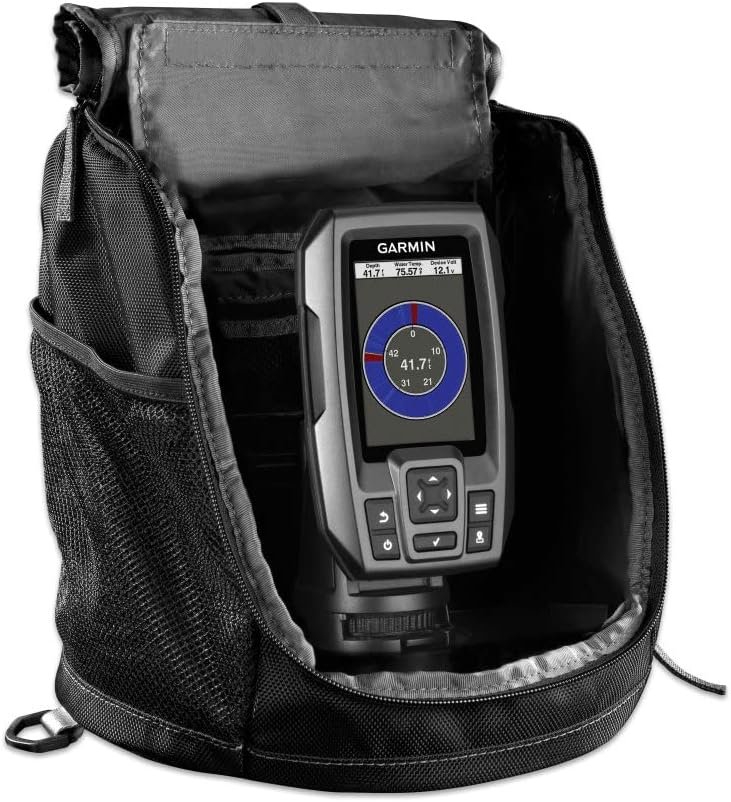
GPS units for marking productive fishing spots
If you’ve ever had one of those “magic” fishing days where the bites just keep coming, you know how heartbreaking it is to never find that same spot again. That’s where GPS comes in. I used to rely on shoreline landmarks and memory, but wind and changing light can make everything look different. Now, I mark every productive spot with a waypoint the second I hook up.
Modern GPS units with mapping features are amazing. I use one that overlays contour maps so I can pinpoint humps, drop-offs, and points down to the foot. It’s saved me hours of searching, especially on big lakes like Lake of the Woods, where everything looks the same.
One tip I picked up: don’t just mark one point. Drop several around the area so you can return and work the whole zone systematically. Walleye move in small pods, so what was hot one day might shift 20 yards the next.
Underwater cameras to study fish behavior
Underwater cameras might sound like overkill, but they’re easily one of the coolest tools I’ve ever added to my kit. When I first used one during ice fishing season, I was blown away. I could literally watch how walleye reacted to my bait. Sometimes they’d swim up, inspect it, and just drift away, no bite. That taught me more about presentation than any YouTube video ever could.
Now, I use cameras year-round to scout structure. They help confirm what my sonar shows, whether those marks are fish or just debris. They’re especially handy in clear water or when fine-tuning lure action. I once discovered that my jigging motion was too aggressive; the fish would flinch and back off. I toned it down, and suddenly the bites started rolling in.
If you’re serious about learning fish behavior, a camera gives you an underwater classroom. It’s not about spying, it’s about understanding.
Trolling motor accessories for precise positioning
Precision boat control is everything when it comes to walleye. These fish can be finicky, and sometimes staying right on a narrow contour or rock pile makes the difference between a full livewell and a long nap in the sun. My trolling motor with GPS anchor (spot-lock) has become my best fishing buddy.
I can hold perfectly over a deep hole or drift along a breakline at just the right speed, even in wind or current. Before I had spot-lock, I was constantly fighting the tiller and missing bites. Now, I just hit a button, and the motor keeps me locked in place while I focus on the fun part, catching fish.
Add-ons like remote controls, foot pedals, and heading sensors make the system even smoother. I’ve even started mapping my own trolling paths with autopilot features, perfect for covering large flats consistently.
One quick note: invest in a reliable battery setup. Nothing kills a fishing day faster than a dead trolling motor halfway through prime time. Been there, done that, paddled home.
Nowadays, my electronics setup feels like a co-pilot rather than just a bunch of gadgets. It helps me fish smarter, not harder. The difference between guessing and knowing where the fish are is like night and day.
Storage, Organization, and Onboard Essentials
When it comes to walleye fishing, efficiency and organization can make or break your trip. Having your gear properly stored and accessible ensures more time fishing and less time fumbling through clutter. From tackle management to safety essentials, these tools help keep every outing smooth, safe, and productive.
Tackle boxes with customizable compartments
A well-organized tackle box is the foundation of a productive walleye fishing setup. Look for tackle boxes or bags with adjustable dividers that let you customize space for crankbaits, jigs, hooks, and soft plastics. Brands like Plano and Flambeau offer waterproof, rust-resistant options that keep gear protected from the elements. For anglers who frequently switch between techniques, modular systems or drawer-style boxes make it easy to swap out trays depending on the day’s strategy. Labeling compartments can save valuable time when targeting walleye that change depth or feeding patterns throughout the day.
Rod holders for boats and shore setups
Rod holders are essential for hands-free fishing, especially when trolling or running multiple lines. For boat anglers, opt for adjustable and lockable rod holders made from corrosion-resistant aluminum or heavy-duty composite. They allow for precise positioning, keeping rods at optimal angles to detect subtle walleye bites. If you’re fishing from shore or a pier, ground spike rod holders or clamp-on versions offer the same stability and convenience. Having several on hand allows you to test multiple lure depths or baits simultaneously without constant rod handling.
Cooler options for keeping bait fresh
Nothing turns off walleye faster than sluggish or dying bait. A reliable cooler system can make all the difference. Invest in a bait-specific cooler with built-in aerators to keep minnows and leeches lively throughout the day. For nightcrawlers, use insulated containers with moist bedding to maintain ideal temperatures. In summer, an ice-retaining cooler is invaluable for storing both bait and your catch, preventing spoilage during long trips. Portable 12-volt-powered coolers are another excellent upgrade for anglers who spend entire weekends on the water.
Waterproof bags and safety gear for extended trips
When you’re out for long days or even overnight trips, keeping your gear safe from moisture and mishaps is critical. Dry bags are perfect for storing extra clothes, electronics, and maps, ensuring they remain dry even if the boat takes on spray or rain. Look for heavy-duty roll-top designs made from PVC or tarpaulin material. In addition, always pack essential safety gear: a first aid kit, PFDs (personal flotation devices), flashlights or headlamps, and a whistle or flare for emergencies. For remote areas, a handheld VHF radio or satellite communicator adds another layer of safety, especially where cell service drops out.
Clothing and Weather Protection Gear
Walleye fishing demands adaptability, not just in technique, but in how you prepare for the elements. From blazing summer sun to frigid winter ice, having the right clothing and protective gear can make the difference between a memorable catch and a miserable day. The right apparel keeps you comfortable, safe, and focused on the water rather than the weather.
UV-protective fishing shirts and hats
Long hours under direct sunlight require more than just sunscreen. UV-protective fishing shirts made from lightweight, moisture-wicking fabrics provide superior defense against harmful rays while keeping you cool and dry. Look for UPF 30–50+ rated materials, mesh ventilation panels, and quick-dry technology. Brands like Columbia PFG, Huk, and Simms specialize in sun-safe performance wear for anglers.
Pair your shirt with a wide-brimmed hat or cap with a neck flap to shield your face and neck from sunburn. For maximum coverage, consider buff-style neck gaiters that double as face protection on windy or sunny days. UV protection isn’t just about comfort; it’s about long-term skin health and maintaining focus during hours on open water.
Rain gear for unpredictable weather
A sudden downpour doesn’t have to end your day. Durable rain jackets and bibs designed for anglers keep you dry without restricting movement. Choose breathable, waterproof fabrics like Gore-Tex or PVC-coated nylon to prevent overheating during active fishing.
Ensure that your rain gear features adjustable cuffs, storm flaps, and sealed seams to block out moisture. A hood with a stiff brim keeps water out of your face, while reinforced knees and seat areas add durability during long sessions in the boat. Packable rain gear that fits into a small bag is ideal for travel or for keeping in your tackle box when the weather shifts unexpectedly.
Polarized sunglasses for spotting fish
Seeing beneath the surface gives you a tactical edge. Polarized sunglasses cut glare from the water, allowing you to spot walleye movements, structure, and baitfish activity that would otherwise go unnoticed. Amber, copper, or brown lenses are ideal for enhancing contrast in low light, perfect for early morning or evening fishing when walleye feed aggressively.
Choose frames with wraparound designs to block peripheral glare, and make sure the lenses are scratch-resistant and UV-blocking. High-end options like Costa Del Mar, Oakley, and Wiley X offer durable models tailored for fishing conditions. Beyond visibility, polarized lenses protect your eyes from UV exposure and reduce fatigue during long days on the water.
Cold-weather gloves and thermal wear for ice fishing
When winter rolls in, ice anglers know that staying warm is critical, not just for comfort, but for safety. Thermal base layers made from merino wool or synthetic blends trap body heat while wicking away sweat. Layering is key: start with a moisture-wicking base, add an insulating mid-layer like fleece, and top it with a windproof, waterproof shell.
Hands are particularly vulnerable to the cold, so invest in insulated, waterproof gloves designed for ice fishing. Look for models with removable liners or fold-back fingers, allowing for knot tying or baiting hooks without full exposure. Don’t forget thermal socks and waterproof boots with high insulation ratings, ensuring both warmth and traction on slippery ice.
Boat and Shore Setup Accessories
Whether you’re out in a fully rigged fishing boat or casting from the bank, the way you set up your space can make or break your walleye trip. Organization, efficiency, and comfort go a long way in helping you focus on presentation and bite detection rather than fumbling around for gear. I’ve learned, sometimes the hard way, that a well-thought-out setup often leads to more fish in the net and fewer headaches during the day.
Boat mounting systems for rods, electronics, and gear
Let’s be honest, space on a boat disappears fast. Between tackle boxes, electronics, nets, and extra rods, things can get cluttered quickly. That’s why I started using modular mounting systems like those from RAM Mounts or Scotty, which let me attach rod holders, fish finders, and even cameras in specific positions. Having everything locked in but still adjustable keeps the deck clear and minimizes chaos when a big walleye hits.
For trolling setups, I swear by adjustable rod holders that can pivot and lock into multiple angles. It keeps lines spread evenly and prevents tangles when running multiple baits. Make sure mounts are secured to solid surfaces, and always carry a few extra clamps or hardware, because losing a mount mid-trip is a pain you won’t forget.
Shore fishing stands and portable rod holders
When I fish from shore, especially in spring when walleye move shallow, having portable rod holders changes everything. Simple PVC pipe holders or foldable metal stands can keep rods secure while you re-rig or handle bait. I’ve lost more than one rod to a sudden strike before learning to always stake my holder deep into the ground or sand.
For those who like to move frequently, tripod-style holders or bank sticks are super handy; they set up fast and can hold multiple rods. Look for holders with angle adjustments so you can control your line’s contact with the water, especially in windy conditions.
Anchor systems and drift socks for boat positioning
Precise boat control is key when jigging or trolling for walleye. I used to rely on the motor alone, but I learned that using anchors and drift socks gives far better control. A fluke or mushroom anchor works well for small to medium boats, especially in sand or mud bottoms where walleye like to feed.
When the wind picks up, drift socks are a lifesaver. They slow your drift to the perfect pace for vertical jigging or slip bobbering. Match the size of your drift sock to your boat length; too small, and you’ll still move too fast; too big, and it’ll be a wrestling match to pull up.
Lighting, seats, and comfort accessories for long fishing sessions
Night fishing for walleye is one of my favorite things, but good LED deck lighting is essential. Mount soft, red or green lights along the boat’s edges; they help preserve night vision and won’t spook fish. Clip-on headlamps or portable lanterns are great for quick tackle changes or landing fish after dark.
Comfort matters, too. I upgraded to padded, swivel fishing seats after too many sore-back mornings. For shore setups, a folding camping chair with rod holder attachments is perfect. And don’t underestimate cup holders and small storage trays, they keep essentials like pliers, phones, and snacks within easy reach.
In summary: Whether on a boat or along the shoreline, efficiency and comfort define your walleye setup. From smart mounting systems to stable rod holders and drift control gear, it’s all about reducing clutter and increasing focus. The less time you spend wrestling with gear, the more time you spend hooked up with fish, and that’s the ultimate goal.
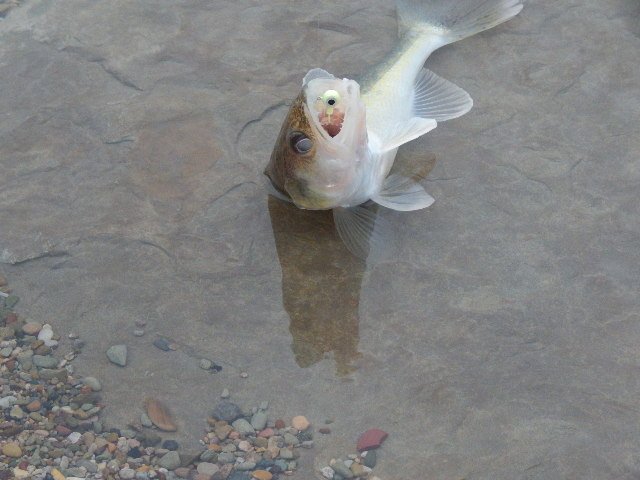
Gear Up and Reel in with Walleye Fishing Accessories
When it comes to landing more walleye, your accessories matter just as much as your skill. From specialized rods and reels to electronics that put you on the fish, the right gear can transform your time on the water. Investing in quality equipment isn’t just about making fishing easier; it’s about making every trip more rewarding.
So before your next outing, review your tackle box, check your boat storage, and upgrade where needed. The walleye won’t wait forever, and with the right accessories, you’ll be ready when they strike.
FAQ Section
What is the most important accessory for walleye fishing?
While it depends on your fishing style, a high-quality rod and reel combo designed for walleye is essential. Pairing the right rod action with the correct reel ensures you can detect subtle bites and land fish efficiently.
Are live baits better than artificial lures for walleye?
Live bait like minnows, leeches, and nightcrawlers can be extremely effective, especially in cooler water. However, artificial lures such as crankbaits and jigs also work well and are easier to store and reuse.
What accessories should I bring for a full day of walleye fishing?
At a minimum, bring a tackle box with a variety of lures, a landing net, pliers or a de-hooking tool, polarized sunglasses, weather-appropriate clothing, and a cooler for bait or your catch.
Do I need a fish finder for walleye fishing?
A fish finder isn’t mandatory, but it significantly improves your odds. Walleye are often found in deeper or less visible areas, and sonar technology can help you locate them faster.
What type of line is best for walleye fishing?
Many anglers prefer braided line for sensitivity and casting distance, paired with a fluorocarbon leader for invisibility in the water. However, monofilament can still work well for beginners or certain presentations.
Disclaimer: This blog post contains affiliate links

